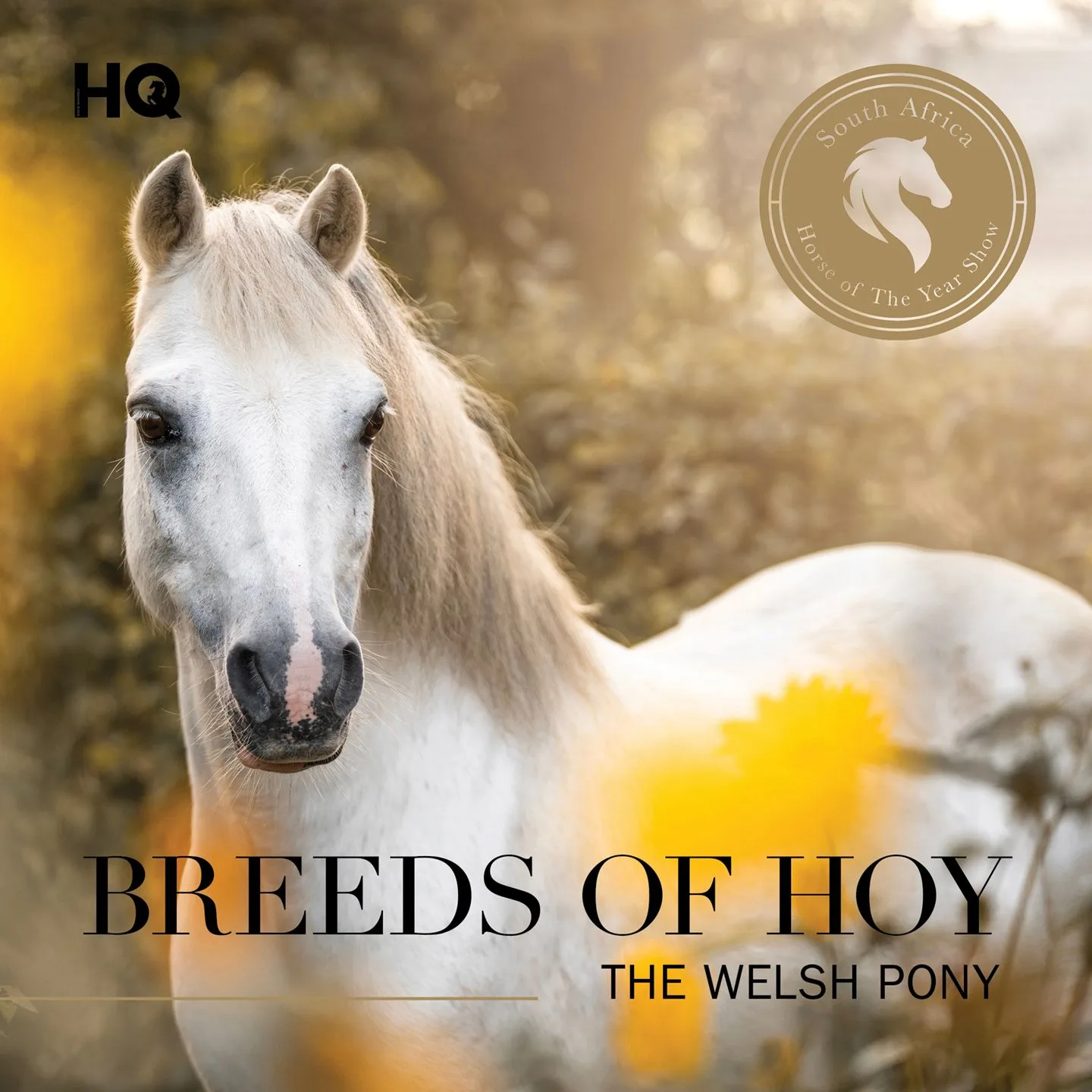According to the Welsh Pony and Cob Society of South Africa:
“Welsh ponies are much in demand as children’s mounts because of their endearing personalities, wonderful temperament, strong constitution, courage and adaptability. They also provide junior and adult owners with much joy whether it be harness or under saddle.”
History of the breed
Early history
Around 8000 BC, Britain was physically connected to both Ireland and mainland Europe, allowing the free migration of animals from Asia and Africa. It is believed that the Celtic pony travelled this route, eventually establishing itself in Wales, Ireland (Connemara), and the Hebrides (Shetland).
Bronze Age and Roman influence
Archaeological findings from the Bronze Age, including a significant collection of harness fragments and small bits (less than 7.5cm) in North Wales, suggest that ponies were used for harness work during this period. By the time of Julius Caesar’s conquest (55–54 BC), ponies were widely present in Wales. Caesar documented their speed and docility as chariot horses and their role as riding mounts.
Medieval mentions and the Crusades
The next notable mention of Welsh ponies appears in 1188 AD when reports described the Welsh hills as being ‘full of ponies.’ One theory suggests that the Welsh Pony and Cob’s final type was influenced by stallions brought back from the East by the Crusaders, though no firm evidence supports this.
The threat of extinction under Henry VIII
Welsh ponies regained prominence in 1535 when Henry VIII decreed that all horses under 13 hands high should be destroyed, as they were too small to carry knights in full armour and were consuming valuable grazing land. However, the mountainous terrain of Wales made it difficult to enforce this law, ultimately saving many ponies.
Survival of the ponies
The harsh climate and repeated persecution, both by Henry VIII and lowland farmers who drove ponies into the hills to protect grazing lands, contributed to the development of a hardy breed with strong bone structure, thick manes and tails, and ample feathering. Dark-coloured ponies, such as blacks, browns, and dark duns, proved the most resilient.
Population growth in the 19th century
By 1892, between 1000 and 1500 ponies were recorded on the Longmynd Hills. It is estimated that this number could be multiplied by ten to account for ponies in the Brecon Beacons, Denbigh Beacons, Eppynt, and Carmarthen. Once captured, many ponies were sold as pit ponies for mines. Others were in demand as harness ponies and children’s mounts for the nobility. Farmers also used them extensively for packing and shepherding.
The influence of Arabian and Thoroughbred bloodlines
During the 19th century, efforts were made to refine the appearance of robust hill ponies. Arab stallions were introduced into the herds, with one notable example being a grey Arabian stallion owned by Mr Williams of Aberpergwm. This stallion is believed to be an ancestor of Dyoll Moonlight, the dam of Dyoll Starlight, a stallion credited with introducing the grey coat colour to hill ponies. Another influential sire of this period was Merlin, a small Thoroughbred stallion released into a Welsh herd on the Ruabon Hills by Sir William Watkins Wynn.
Formation of the Welsh Pony and Cob Society
Since 1884, Welsh ponies could be recorded in the Hackney Stud Book and, from 1899, in the Polo Pony Stud Book. However, in 1901, the Welsh Pony and Cob Society was founded with 248 members, led by Lord Tredegar. The first volume of the Stud Book was published in 1902, listing 38 stallions and 571 mares.
Further Eastern influence
By the late 1920s, demand for quality children’s ponies grew, leading to the introduction of two stallions of Eastern descent into the Stud Book—Tan-y-Bwlch Berwyn (by the Barb stallion Sahara) and Craven Cyrus (by King Cyrus, a son of the Polish Arabian Skowronek). Many of their larger offspring were bred with Hackneys for harness ponies or Thoroughbreds and Arabians to create the now-popular partbred ponies. These stallions also played a significant role in the ancestry of influential Section A and Section B sires and dams.
Stud Book revisions and classification system
The classification system for Sections A, B, C, and D was formalised in 1949, with the Welsh Partbred Register introduced in 1950.
In 1951, the Stud Book classification was revised, eliminating the previous practice of classifying ponies between 12 and 13.2 hands as either Section B or C based on type or owner preference. From then on, classification depended strictly on breeding: A × B = B, A × C = C, B × C = C/D (depending on height), B × D = C/D (depending on height), and C × D = C/D (depending on height).
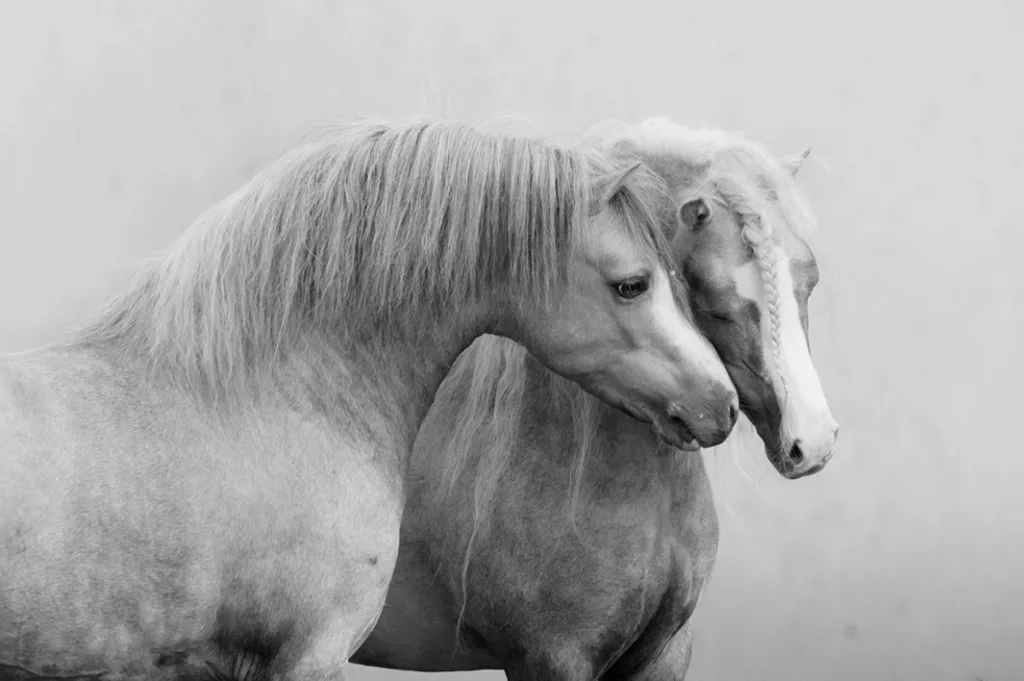
The introduction of Welsh Ponies to South Africa
In 1948, Mrs Rosalie Lasbrey visited the UK to establish a small stud for breeding children’s ponies in South Africa. While attending the Horse of the Year Show, she was particularly impressed by Tan-y-Bwylch Berwyn and decided to acquire in-foal Section A mares and a stallion. Her selections included five mares: Criban Dun Bee, Revel Black Style, Revel Silver Spray, Coed Coch Perten, and her most valued foundation mare, Criban Sara. She also secured the stallion Coed Coch Seryddwr, a son of Coed Coch Glyndwr and sire of the renowned Coed Coch Madog.
Further influence
In 1956, another significant import occurred when Ida Illingworth sought a stallion to improve children’s ponies in South Africa. She acquired Valiant, a Section B stallion who had won his class at the Royal Welsh Show in 1955, defeating his esteemed sire, Criban Victor. This acquisition further enriched the Welsh Pony bloodlines in South Africa.
Other important imports included Mr Streicher’s Section A stallion, Coed Coch Nerog, and the Section B stallion Bannut Larkspur, brought in by Mrs Vale and Miss Illingworth.
The first Welsh Cobs in South Africa included Mrs Kinnersley-Browne’s Sinton Gilbert and Mrs Moore’s Section C stallion, Filkins Kernel. Over time, Mr Streicher expanded the Cob population with several Section D imports, such as Persie Nimrod and Parc Crusader.
Formation of the Welsh Pony Society of South Africa
On March 4, 1957, a meeting in Middelburg, Cape, led to the formation of the Welsh Pony Society of South Africa. Mr JB Grobbelaar was elected as the first Chairman, while Mrs CC Grobbelaar served as Secretary. Miss Ida Illingworth was officially recognised as the Society’s first member.
The Society held its inaugural AGM on September 5, 1957, with 11 registered members. By 1958, 50 purebred Welsh Ponies had been registered, along with 11 partbreds. At the AGM on March 7, 1960, Mr Grobbelaar announced the Society’s affiliation with the South African Studbook Association and the acceptance of its Constitution. By its tenth anniversary in 1967, membership had grown to 55, with 192 purebred and 214 partbred ponies recorded.
Evolution of the Society and Stud Book
The 21st AGM on April 3, 1978, marked a pivotal moment for the Society. The classification system was revised to align with the UK Welsh Pony and Cob Society, officially recognising Section D Cobs. This change prompted a rebranding of the organisation as The Welsh Pony and Cob Society of South Africa.
In 1982, the first volume of the South African Stud Book was published to coincide with the Society’s 25th anniversary. On September 12, 1987, a new constitution was adopted at a special meeting in Bloemfontein, coming into effect on January 1, 1988. This update coincided with the release of the first official edition of the Show Rules, further cementing the Welsh Pony’s presence in South Africa’s equestrian landscape.
The breed
According to the Stud Book classifications, the four ‘Sections’ are as follows:
Section A: The Welsh Mountain Pony (up to 12 hands high/1.22m)
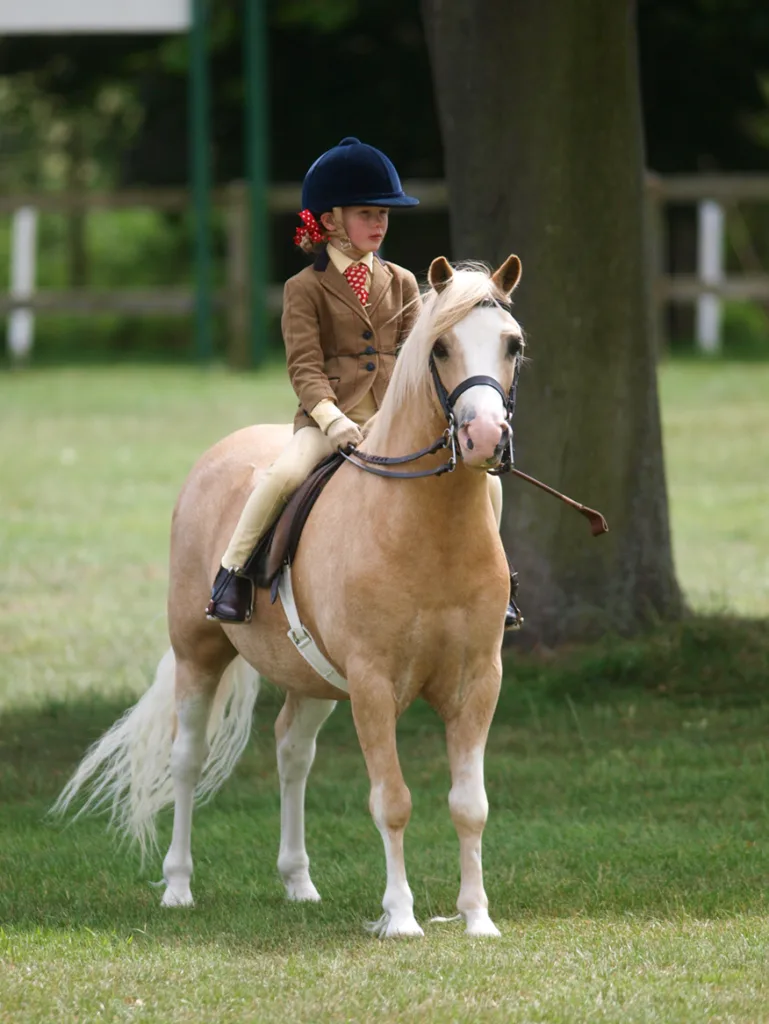
Bred in the mountains of Wales and acknowledged universally as the most beautiful of the British native breeds, centuries of harsh environmental conditions have developed a pony with a sound constitution, iron hard limbs, great intelligence and the renowned Welsh temperament. They are the ideal child’s first pony but are equally at home in harness and, particularly in South Africa, have proven themselves to be highly competitive in the driving show ring.
The head of the Mountain Pony should be small, with neat pointed ears, big bold eyes and a wide forehead tapering to a small muzzle. Action must be straight, free, up and out in front with the hocks well flexed.
Section B: The Welsh Pony (up to 13.2 hands high/1.37m)
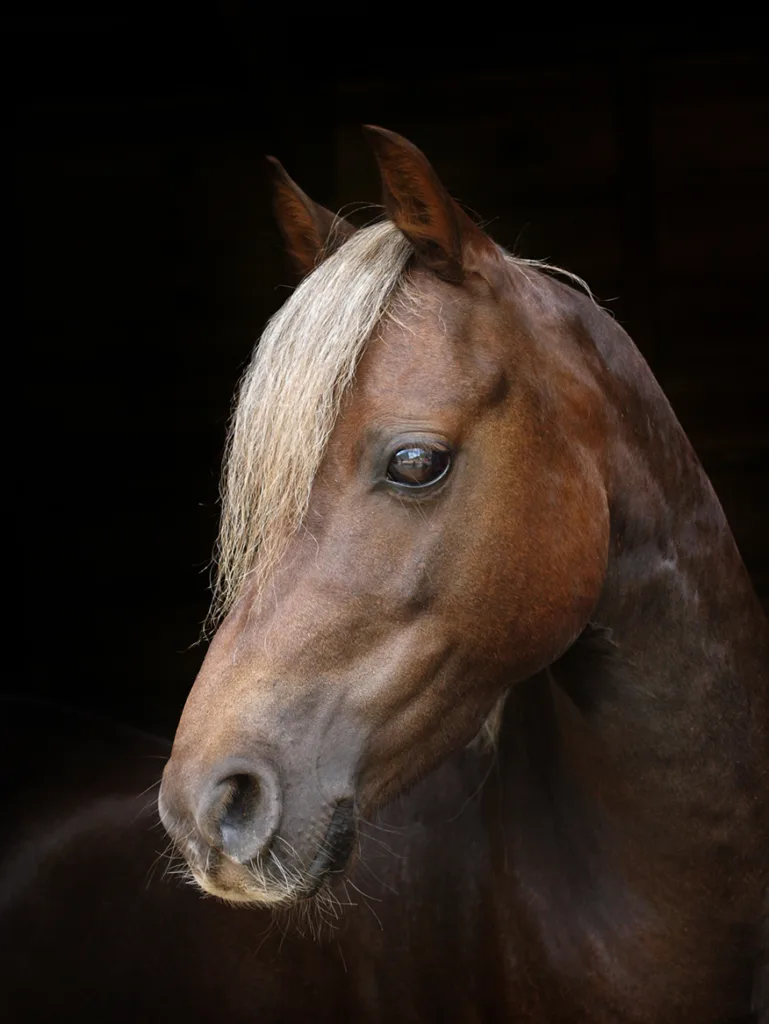
For generations these ponies were the hill farmer’s main means of transport, herding sheep and wild ponies over rough, mountainous country. They had to be hardy, balanced and fast to survive. These qualities combined with a natural jumping ability and their Welsh temperament make them the ideal all-round child’s pony.
The general description of the Welsh Mountain Pony can be applied to the Welsh Pony, but emphasis is placed on riding pony qualities whilst still retaining their hardiness and substance.
Section C: The Welsh Pony of Cob Type (up to 13.2 hands high/1.37m)
The Welsh Pony of Cob Type is the sturdier counterpart of the Welsh Pony containing a large percentage of Cob blood. They are natural jumpers and ideal dual purpose ponies for both riding and driving.
The description of the Welsh Cob also applies to the Welsh Pony of Cob Type.
Section D: The Welsh Cob (over 13.2 hands high/1.37m)
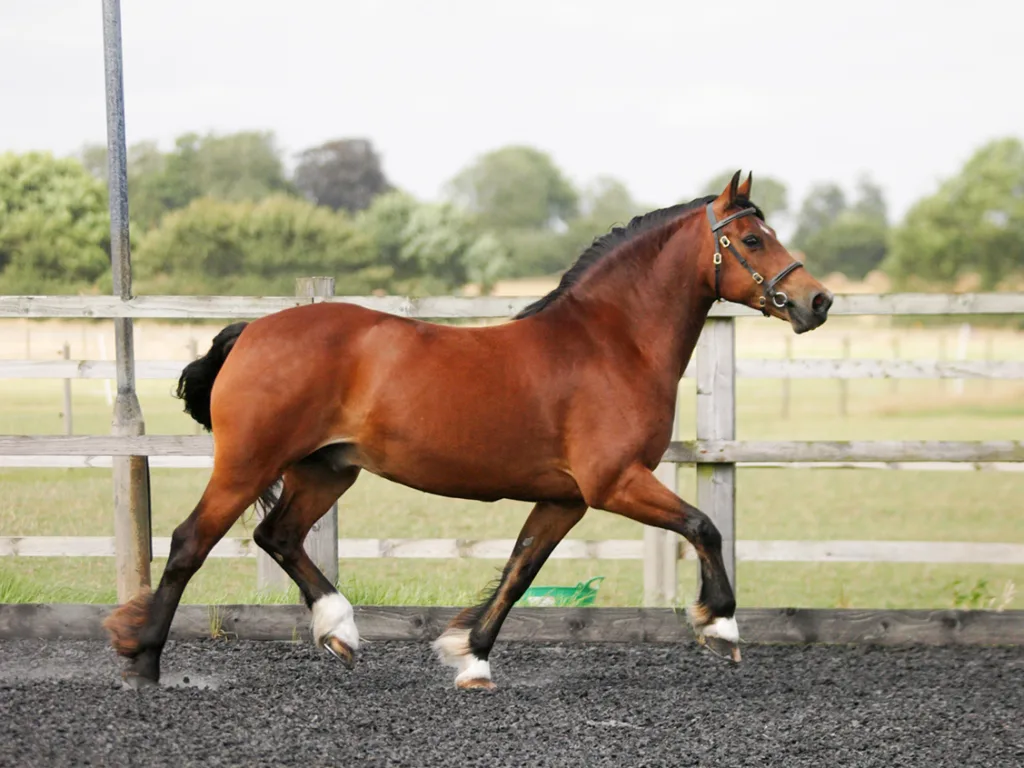
The Welsh Cob has been described as the ‘best ride and drive animal in the world’. Their character exudes strength, hardiness and agility. They are competitive performers world-wide in all aspects of equestrian sport.
The head shows great quality and pony character with bold, prominent eyes and neat well-set ears. The body must be deep with strong limbs and an abundance of flat bone. Action must be straight, free and forceful. The knees should be bent and then the whole foreleg extended from the shoulder as far forward as possible at all paces.
Fun fact
During the 15th century, horses of Cob type were also used as ‘rounceys’. A rouncey is a cheaper warhorse used by squires, often accompanying the much more expensive warhorses known as ‘destriers’, into battle. Small-sized rouncey horses were preferred by mounted archers.
The Welsh Partbred (no height limits with a minimum of 25% Welsh blood)
In South Africa, the Welsh Partbred features strongly in all the equestrian disciplines. They inherit the beauty, constitution, good bone, courage, talent, and equable temperament of their Welsh ancestors, and demand exceeds supply, particularly as mounts for pony riders.
The conformation and good looks of the Welsh Partbred should match those of their Purebred counterparts even though the Welsh Breed characteristics are not a show-ring requirement.
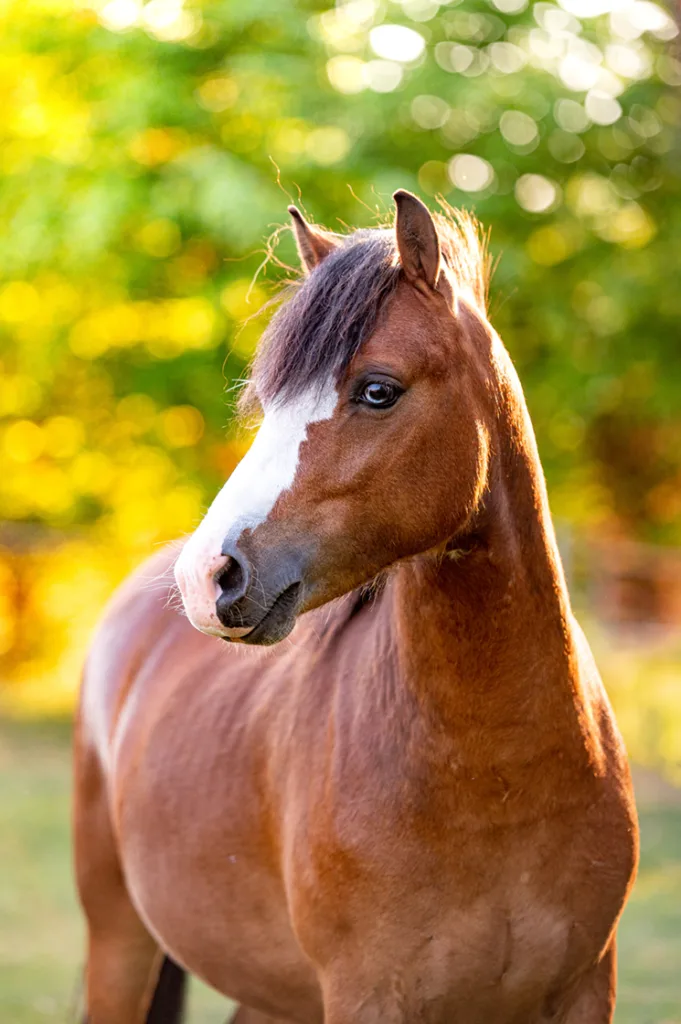
Did you know?
Purebred Welsh Ponies and Cobs may be any colour except Piebald or Skewbald but this restriction does not apply to Partbred animals.

